New Nature Playscape In Forest Park Is Great For Unstructured Play, Nature Lovers
One hundred forty-five years ago (6/24/1876) Forest Park opened to the public, a very large natural area at the time. The Louisiana Purchase Exposition (aka World’s Fair) opened a little less than 28 years later on April 30, 1904.
As a result, Forest Park was no longer natural, with a few exceptions like Kennedy Forest. Still when it was announced a few years ago that a “nature playscape” was to be built in a park I kinda laughed. Uh, a park outdoors is in nature. Like I said, the park no longer resembled nature.
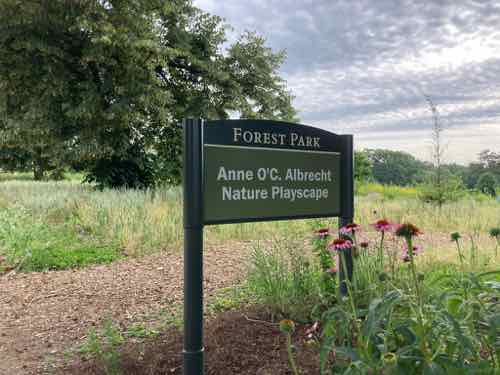
This isn’t a playground as we know them, with swings, slides, etc. Instead it is a natural landscape designed for unstructured play.
Unstructured play is a category of play (as opposed to a type of play) in which children engage in open-ended play that has no specific learning objective. Unlike structured play, unstructured play is not instructor-led, so parents, teachers, and other adults do not give directions. It also does not have a particular strategy behind it.
Unstructured play is often informally referred to as simply “letting kids be kids” or “just play.” At times, you may also hear it called “free play” or self-play.”
As a kid I spent hours playing outdoors with my friends, but that was the 1970s when parents didn’t hover. Today’s kids are kept on a very short leash.
This new space, one of only a few nationally, is worth a visit.
The Anne O’C. Albrecht Nature Playscape is a 17-acre experiential play space with natural landscapes that include native and diverse species. Featuring nine distinct activity distinct activity areas, the free destination includes sand play areas, willow tunnels, stump steppers, boulders and rocks, hand water pumps and much more. The goal: Encourage visitors — especially kids — to connect with nature as they engage their senses as they explore, discover and learn. (Forest Park Forever)
Before I begin to explain why it’s worth a visit, let’s talk about where it is and now to get there. This new space is just southeast of the World’s Fair Pavilion, see PDF map. Photo of the site with the activity areas labeled here.
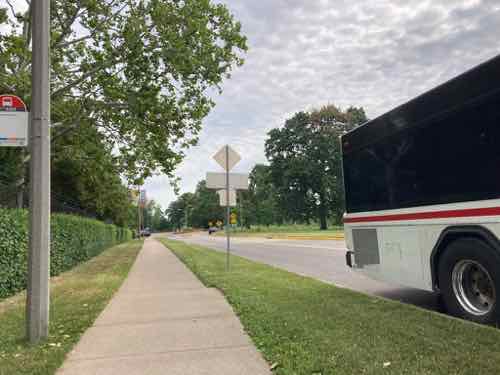
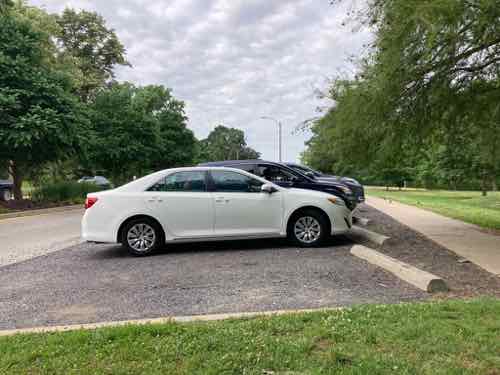
It’s 17 acres so it’s huge, but don’t expect to see big fancy entrance gates. There are no fences or gates, it’s just a free part of the park open for everyone during park hours.
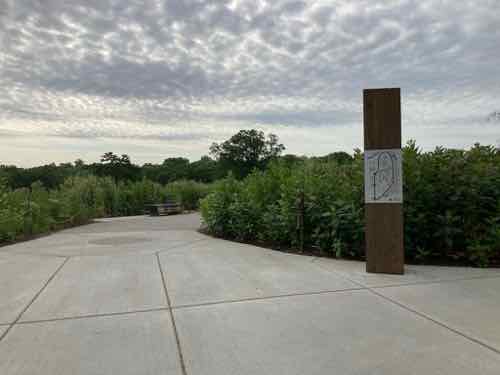
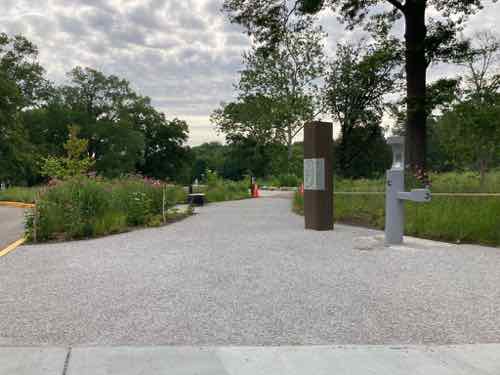
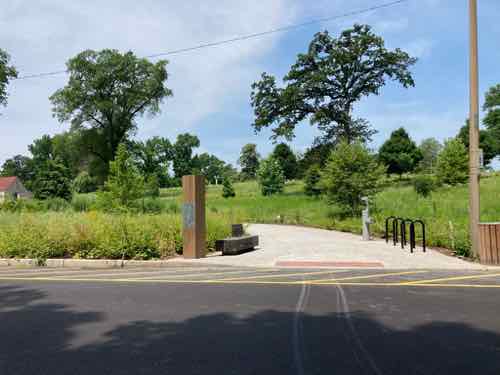
All entrances have nearby car parking, bike racks, a map on the post, etc. Don’t look for any printed maps because they didn’t want the waste/trash. Year-round restrooms are in the World’s Fair Comfort Station, just south of the World’s Fair Pavilion — close to the first two entrances. Seasonal restrooms are also inside the 17 acre space, near the 3rd entrance. There is potable water for refilling water bottles as well as non-drinkable water near some activity zones to help clean the kids up, to wash off all the nature.
Ok, let’s go inside.
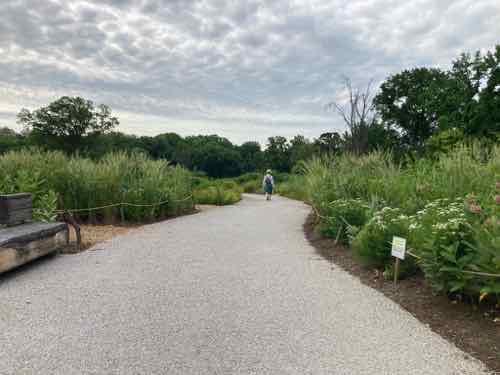
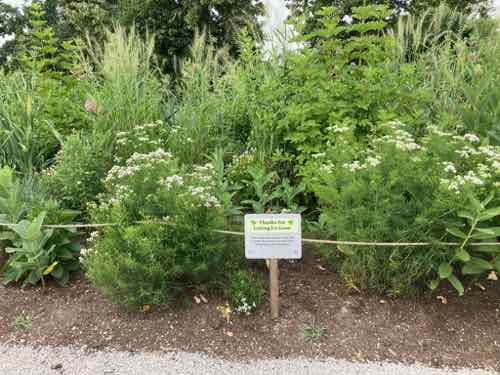
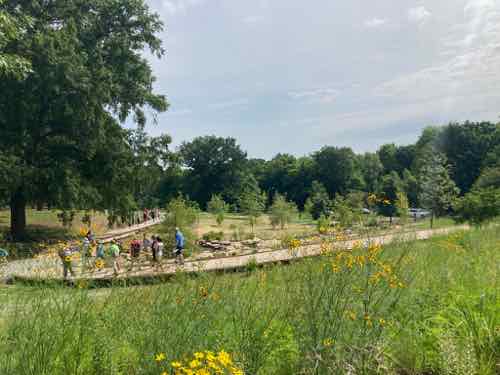
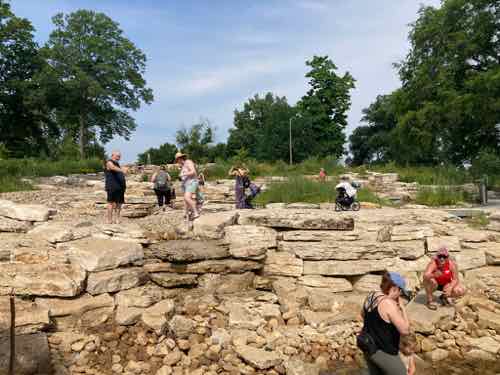
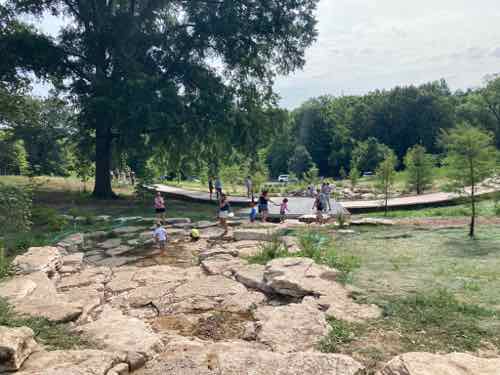
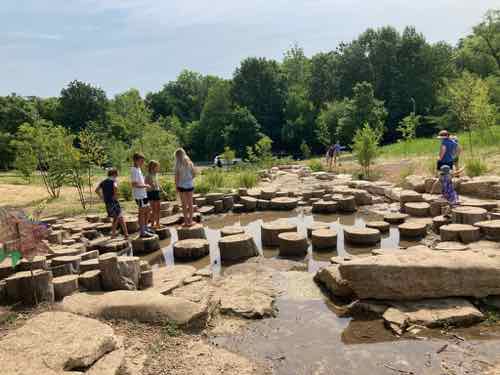
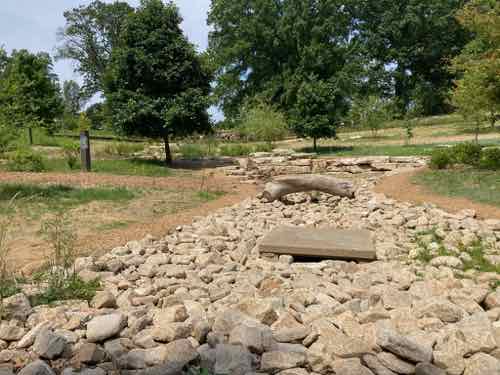
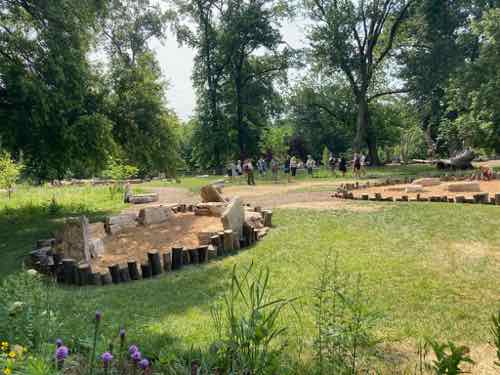
As a huge fan of native perennials I love the space, so much more rewarding than a formal space. Reminded me of hiking at Shaw Nature Reserve years ago, except accessible by public transit and wheelchair friendly. Seating is frequent and varied, with space for strollers and/or wheelchairs out of the path.
I want to return with my husband, and meet friends and their kids here. On my one recent visit those using the space didn’t appear to represent the wide ethnic diversity 0f the region, hopefully that’ll change.
I saw couples without kids using this for their walk/exercise, so don’t think you need kids to show up. If you’ve got young kids, nieces/nephews, cousins, etc please bring them here for a visit. Happy 145th birthday to Forest Park!
— Steve Patterson